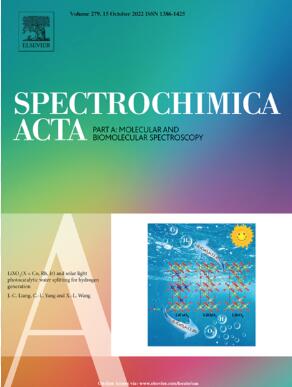Detection of green pepper impurities based on hyperspectral imaging technology
IF 4.3
2区 化学
Q1 SPECTROSCOPY
Spectrochimica Acta Part A: Molecular and Biomolecular Spectroscopy
Pub Date : 2025-04-02
DOI:10.1016/j.saa.2025.126170
引用次数: 0
Abstract
To date, the intelligent assessment of green pepper quality remains an open question, particularly in aspects of color, as impurities closely resemble green peppers. Here, the hyperspectral imaging technology was employed to acquire the original spectral and image information of green and impurities. Subsequently, the original information was processed, and then trained using the super vector machine (SVM), to construct the green pepper impurity detection model. After training, the constructed model achieved 100% accuracy in the training set and 89.7% accuracy in the testing set, which generally met the application requirements. Visualization images of the constructed model in the application of identification green pepper impurity were prepared and optimized, which significantly achieved relatively satisfactory outcomes. Findings of this case study revealed that the presented strategy would provide a theoretical basis for the intelligent processing of green pepper, especially accelerate the development of impurity detection technology.

求助全文
约1分钟内获得全文
求助全文
来源期刊
CiteScore
8.40
自引率
11.40%
发文量
1364
审稿时长
40 days
期刊介绍:
Spectrochimica Acta, Part A: Molecular and Biomolecular Spectroscopy (SAA) is an interdisciplinary journal which spans from basic to applied aspects of optical spectroscopy in chemistry, medicine, biology, and materials science.
The journal publishes original scientific papers that feature high-quality spectroscopic data and analysis. From the broad range of optical spectroscopies, the emphasis is on electronic, vibrational or rotational spectra of molecules, rather than on spectroscopy based on magnetic moments.
Criteria for publication in SAA are novelty, uniqueness, and outstanding quality. Routine applications of spectroscopic techniques and computational methods are not appropriate.
Topics of particular interest of Spectrochimica Acta Part A include, but are not limited to:
Spectroscopy and dynamics of bioanalytical, biomedical, environmental, and atmospheric sciences,
Novel experimental techniques or instrumentation for molecular spectroscopy,
Novel theoretical and computational methods,
Novel applications in photochemistry and photobiology,
Novel interpretational approaches as well as advances in data analysis based on electronic or vibrational spectroscopy.

 求助内容:
求助内容: 应助结果提醒方式:
应助结果提醒方式:


